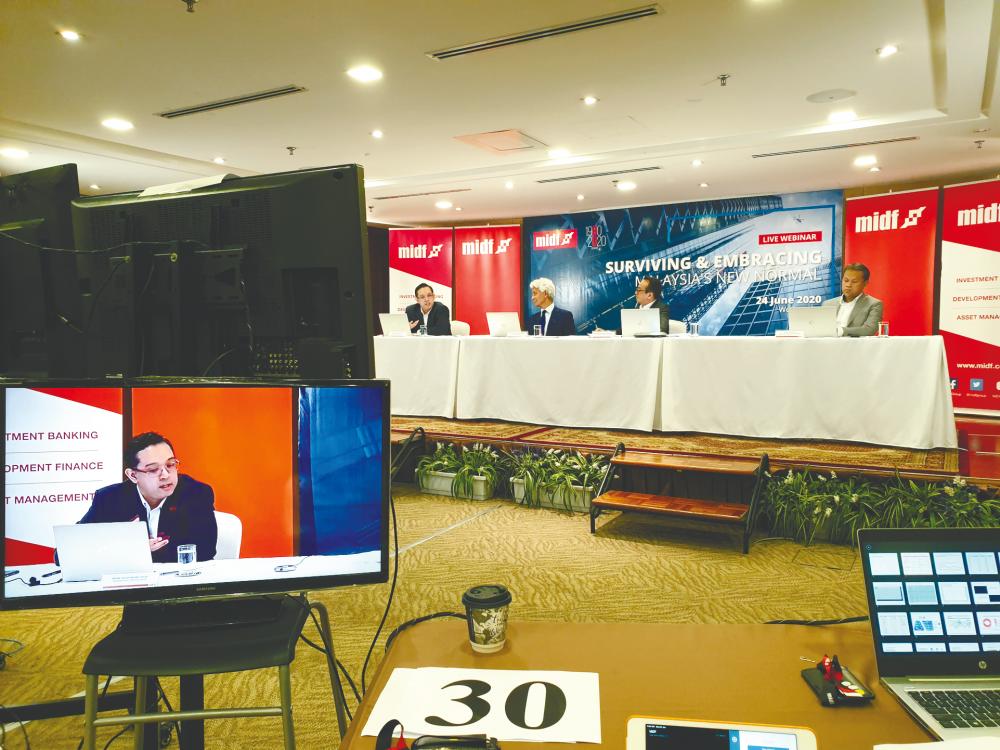PETALING JAYA: The local bourse’s recovery of late, as reflected in the FBM KLCI, has been by and large driven by liquidity and retail investors, which in turn has caused a disconnect between the equity market and the economy.
In its webinar titled “Surviving and Embracing Malaysia’s New Normal”, MIDF senior analyst Imran Yassin said based on in-house calculations, stimulus programmes all over the world, both fiscal and monetary, have totalled up to well over US$14 trillion (RM38.75 billion).
He said all this money has to go somewhere and it has found its way to the financial markets driven by retail investors. From a retailer’s point of view, Imran pinpointed that this is possibly due to the idle time from the implementation of the movement control order (MCO), spare cash as a result of the loan moratorium and lack of returns elsewhere as interest rates for fixed deposits are very low.
“Investors have a blue sky scenario in mind with their investment as they are expecting a V-shaped recovery,“ said the senior analyst.
After falling nearly 400 points to a low of 1,219.72 points in mid-March, its lowest since the global financial crisis in October 2009, Bursa Malaysia’s benchmark index is viewed to be on track to erase its losses from earlier this year.
However, Imran noted that this will not last as the market is bound to follow the fundamentals and corporate earnings prospects are not that great. He also did not discount the possibility of the bubble bursting.
“Certainly, the stock markets look sustainable at the moment but we do not think it will remain so for long, as the markets will follow the fundamentals sooner or later. So yes, we do think that there is going to be another downward thrust.”
Today, the FBM KLCI closed down 4.41 points at 1,502.63. Overall, there were 409 gainers, 556 losers and 412 counters unchanged. Total volume dwindled to 5.39 billion shares valued at RM2.60 billion from 8.75 billion shares worth RM2.98 billion yesterday.
MIDF’s group managing director, Datuk Charon Wardini Mokhzani, highlighted that the wall of money that came with the stimulus packages introduced around the world was not meant to find its way into the stock markets, but instead was meant to help keep businesses running.
“There’s this belief among investors that the government is never going to let the market go down and somehow the government will save the market, at least, certainly the US investors behave in such a way,” he said.
In regard to the Malaysian stimulus measures, Charon lauded the government’s initiative to introduce the wage subsidy programme, as two-thirds of Malaysian are employed by SMEs.
“This is really important because if we haven’t looked after the SMEs and kept them going we could have seen some really serious unemployment.”
On concerns that the stimulus measures would cause Malaysia to hit its debt ceiling of 55% of gross domestic product by the end of the year, Charon noted that the cap is self-imposed and can be changed through parliament if deemed necessary.
“Technically, we can go higher as the ceiling is self-imposed through an act, where they can change it through parliament (such as increasing) it to 60-65% depending on the needs of the country presently,” he said.
On Tuesday, Finance Minister Tengku Zafrul Abdul Aziz said the country’s debt level, currently at 52%, could reach 55% later this year due to measures implemented under the Prihatin Rakyat Economic Stimulus Package and the National Economic Recovery Plan.














